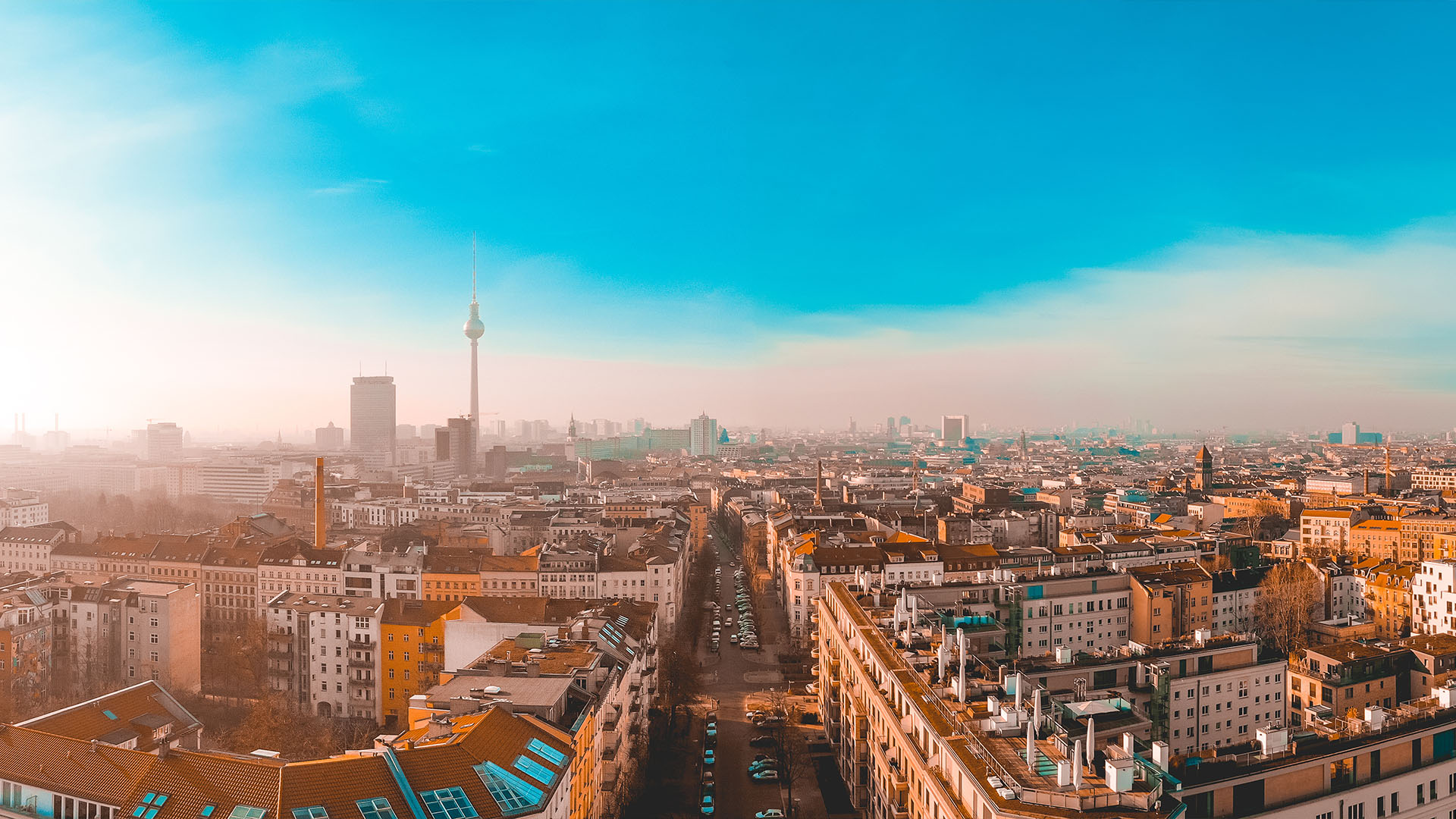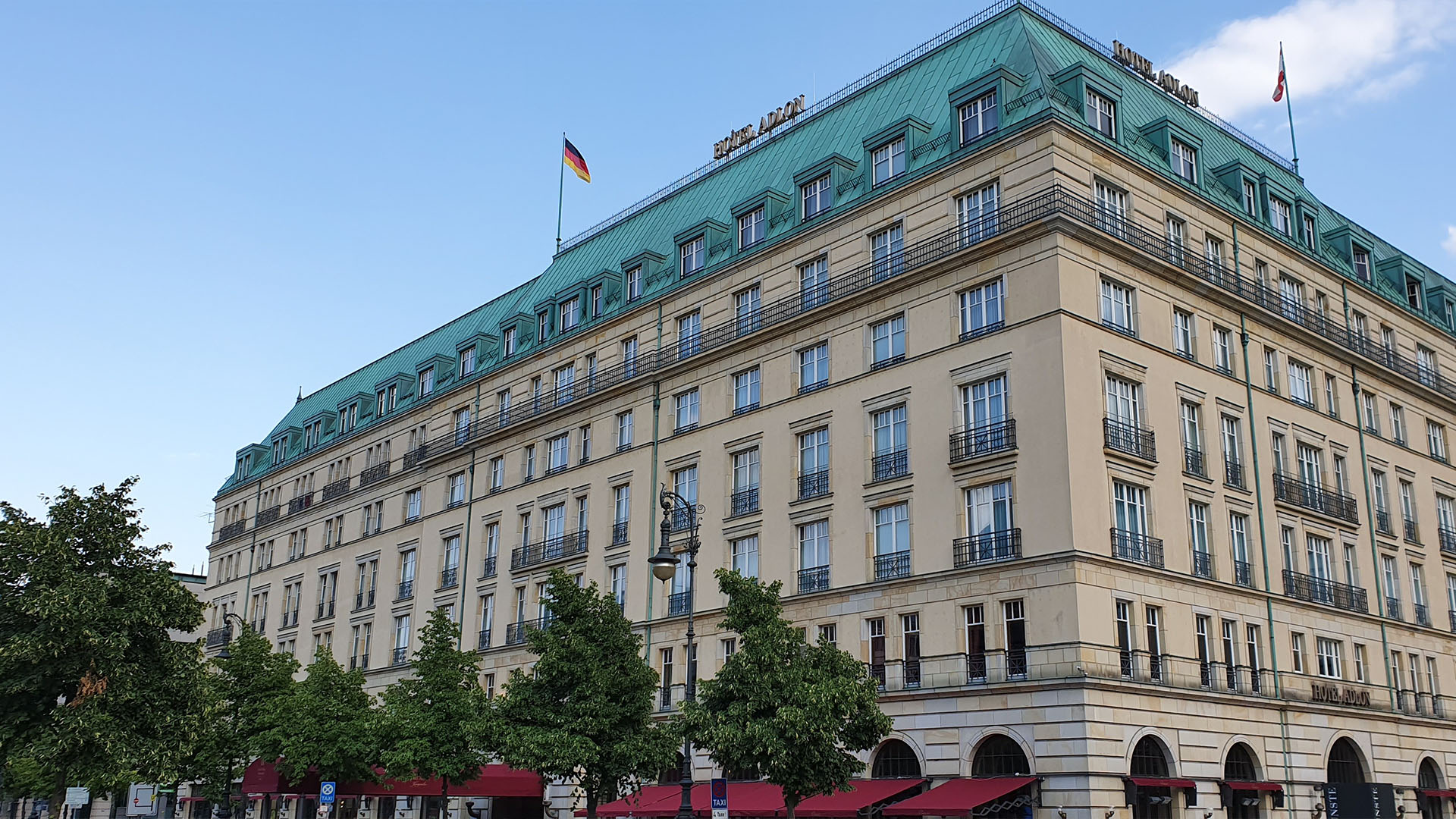 Credit: Adobe Stock
Credit: Adobe StockCan Europe’s biggest economy continue its Commercial Real Estate rebound?
Exclusive insights from Germany’s top decision-makers on what to expect next for Offices, Retail, Hospitality, and Logistics
May 15, 2025Real Estate
Written by Rory Hickman
At a series of exclusive GRI Club meetings, senior commercial real estate investors, fund managers, asset owners, lenders, and developers from across the DACH region gathered to discuss the latest trends, challenges, and opportunities shaping the commercial property market in Germany.
With insights drawn from some of the most prominent figures in the industry, these discussions revealed the ongoing dynamics in office, retail, hospitality, and logistics sectors, as well as the evolving investment sentiment.
The German office market is recovering but progress was observed to remain slow. Investors are cautious but still looking for opportunities, especially in prime office locations with good environmental, social, and governance (ESG) qualifications and high-quality amenities.
Grade-A office projects are seeing steady rent growth, but financing challenges persist, with banks requiring high deposits and being less willing to invest in the current market.
In Berlin, prime office spaces, particularly in central locations, continue to attract tenants, with rents slightly increasing in some areas of the city. However, vacancy rates in some central locations, such as Kreuzberg, are rising due to weak demand.
Office buildings in less central locations, like Lichtenberg, are seeing better occupancy due to stable demand from companies that still require a regular office presence.
Evolving Demands
Many large tenants are observed to be downsizing their office spaces, moving to higher-quality locations with better amenities, but as the trend of "flight to quality" continues, some tenants are opting for smaller, more affordable spaces in less prime locations.
The demand for smaller office spaces - less than 500 square meters - was noted to remain particularly robust, with interest primarily coming from tech companies and startups.
There is a growing interest in converting older office buildings into residential or mixed-use spaces. However, this is often challenging due to the buildings' layouts and the high costs of retrofitting for modern needs and ESG compliance.
Some projects, especially in well-located areas, are successfully converting to residential or student housing, but this strategy has not yet been widely adopted.

Berlin's Office Hub Future
While Berlin may not surpass Frankfurt as the financial hub of Germany, it is growing as a tech hub. The city's workforce is expected to grow significantly by 2030, providing potential opportunities for office demand.
However, Berlin faces challenges with a lack of available office space, especially for new companies. The city's reliance on remote work for startups is also creating an imbalance in demand.
Financing and Capital Availability
Family offices and alternative lenders are becoming the primary sources of capital for office projects, particularly in the context of value-add opportunities. Traditional core capital is still slow to return to the market.
For developers, financing new office projects is difficult due to high capital expenditures and a lack of debt availability, which is causing a slowdown in new developments.
Following the pandemic, the retail sector experienced challenges, but customer traffic has returned, albeit at a lower frequency.
Some shopping centres are performing well, with occupancy rates at 97%, while others are facing difficulties, especially in less desirable locations.
Retail turnover has been increasing, particularly in quality locations, and rental levels have risen, but market polarisation has led to a stark divide between successful and struggling centres.
Successful retailers, especially in fashion, are adapting well by focusing on hybrid structures (physical and online), allowing them to grow turnover. Top brands are leading the way with turnover-only rent agreements, which are proving lucrative for landlords.
Retailers that fail to adapt to evolving customer needs, particularly those that couldn't adjust post-COVID, have struggled and faced bankruptcy.

Shopping Centre Standards
The need for shopping centres to be actively managed was also highlighted, with regular tenant reviews being recommended to ensure high-quality tenants are in place.
A diversified tenant mix, including a range of food and beverage, entertainment, and fitness options - as well as medical services - is crucial for maintaining customer engagement and ensuring that the space remains relevant.
Revitalisation is seen as key to the long-term success of these properties, and this may involve converting spaces or enhancing their offerings to better meet customer needs, with examples that include integrating hotels, coworking spaces, medical facilities, and leisure amenities.
Asset managers must continually assess their centres to ensure they remain attractive to customers and viable for tenants. This may involve upgrading facilities, adjusting tenant mixes, or even temporarily leaving spaces vacant to allow for better long-term planning.
Participants shared examples of how shopping centres are evolving to include more experiential elements such as influencer-driven marketing, interactive shopping, and technology integration, such as in-store product suggestions.
Food-Anchored Retail
Food-anchored retail assets, particularly supermarkets and discount stores, were highlighted as resilient and are seen as an attractive class for investment, with stable, long-term cash flows.
In some regions, food retail still lags behind online shopping, with online penetration of food sales below 5%, indicating that physical stores remain essential for these products.
However, the shift to food delivery services can be challenging due to logistics requirements and the need for specialised facilities, but it remains an area of growth for certain retailers.
Financing Trends
The retail financing market has shown signs of recovery, with banks beginning to bid again for shopping centre projects, though conditions remain selective. Food-anchored retail remains a prime target for investors due to its stable cash flows.
A trend towards shorter, more flexible lease structures was observed, with turnover rent models being used in some centres, although this comes with risks depending on the tenant's success.

The hospitality market has seen a strong rebound following the pandemic, with people eager to travel again and hotels, particularly in tourist-heavy cities like Hamburg, seeing the return of both leisure and business-oriented guests.
While budget business hotels are also thriving, with high occupancy rates despite lower overall revenue per room, the business travel segment is becoming smaller, although it remains profitable with proper operational efficiency. The sector is also experiencing a growing demand for camping and outdoor hospitality options.
Serviced apartments are seen as an attractive investment, particularly in cities with tight housing markets, such as Berlin, Munich, and Frankfurt. They are a flexible solution for both long-term stays and short-term needs, particularly for professionals and students.
Hospitality & Housing
One of the key challenges is the overregulation in cities like Berlin, where there is limited supply of affordable housing and high demand for temporary accommodations. This has created opportunities for serviced apartments, but also concerns about future regulation and price increases.
The conversion of office buildings into residential or serviced apartment spaces is seen as a potential solution to the housing shortage, but it faces hurdles such as planning regulations and the need for significant investment in renovation.
Funding & Investment
The financing of hotels remains robust, with both high-end and budget hotels attracting interest. However, the potential for middle-market hotels remains uncertain, with players expressing concerns about long-term viability and profitability.
Overall, the market for hospitality continues to grow, but the demands are shifting, with investors increasingly focusing on leisure, budget business hotels, and serviced apartments due to their profitability and resilience, though with a need for careful operator selection to ensure sustainable returns.

Although high rental market demand persists, logistics rents have fallen from their post-pandemic highs. This reduction is partly due to the oversupply in some regions, especially in Eastern Germany, where speculative developments have led to excess capacity.
The growing importance of resilience was highlighted by discussions on supply chain disruptions due to geopolitical shifts and increasing demand for more secure storage capacities.
Supply chain disruptions, which became more prominent during the COVID-19 pandemic, have continued to affect the sector, with buffer warehouses being particularly impacted, leading to increased challenges in maintaining efficient distribution networks.
The ongoing complexity is further exacerbated by rising construction costs, as new facilities are more expensive to build compared to pre-pandemic levels.
Despite the push for reindustrialisation in Europe, reshoring was observed to be less attractive in Germany, where energy, labour, and operational costs are higher and regulations stricter, while being more pronounced in the CEE region, notably Poland and Romania.
Logistics Sector Trends
Automation and artificial intelligence (AI) are becoming essential in optimising logistics operations according to participants, allowing for faster, more efficient supply chains and better management of inventory, reducing the reliance on human labour and mitigating the impact of labour shortages.
Pharmaceutical logistics and cold chain solutions are seeing significant growth, driven by regulatory changes and the increasing need for secure, temperature-sensitive supply chains.
Cold storage facilities, especially for pharmaceuticals, are in high demand, with a growing need for specialised assets that ensure the integrity of products during transport and storage.
E-commerce also continues to drive demand for logistics spaces, with companies seeking more distribution centres to handle the increasing volume of goods being sold online.
Food logistics, particularly food e-commerce, has also gained momentum, as more consumers opt for online grocery shopping. However, the logistics of food delivery remain complex due to the need for quick turnaround times and temperature-controlled environments.
Quick commerce, or Q-commerce, is rapidly gaining traction, especially in urban areas. This model, which focuses on delivering products within hours or even minutes, has led to the establishment of hyperlocal distribution networks.
As demand for faster deliveries rises, companies are investing in smaller distribution hubs closer to urban centres to meet customer expectations.

Investment & Financing
Investors are increasingly looking for opportunities that offer long-term, stable returns, with many turning to logistics as a safe haven amidst the broader uncertainty in the real estate market.
Cash flow stability remains a key draw for logistics investments. Unlike retail or hospitality, logistics properties typically offer long-term, inflation-linked rental contracts, which provide a predictable income stream for investors.
However, access to capital is becoming more challenging, with many developers turning to alternative financing models or partnerships to secure funding for new projects.
To attract tenants, developers are offering higher incentives, such as flexible lease terms or rent reductions, in an effort to fill vacancies and ensure long-term occupancy.
Despite challenges, foreign investment in the German logistics sector remains strong, continuing to attract international investors due to its central location in Europe, well-developed infrastructure, and long-term rental stability.
Domestic institutional investors, on the other hand, are showing higher levels of caution, with a preference for core-plus assets and value-added opportunities, rather than speculative developments.
The answer from top industry players appears to be yes - but selectively. Progress will depend on investor appetite for value-add opportunities, access to alternative capital, and the adaptability of assets to meet emerging economic, demographic, and regulatory trends.
At a series of exclusive GRI Club meetings, senior commercial real estate investors, fund managers, asset owners, lenders, and developers from across the DACH region gathered to discuss the latest trends, challenges, and opportunities shaping the commercial property market in Germany.
With insights drawn from some of the most prominent figures in the industry, these discussions revealed the ongoing dynamics in office, retail, hospitality, and logistics sectors, as well as the evolving investment sentiment.
Offices
Office Market ReboundThe German office market is recovering but progress was observed to remain slow. Investors are cautious but still looking for opportunities, especially in prime office locations with good environmental, social, and governance (ESG) qualifications and high-quality amenities.
Grade-A office projects are seeing steady rent growth, but financing challenges persist, with banks requiring high deposits and being less willing to invest in the current market.
In Berlin, prime office spaces, particularly in central locations, continue to attract tenants, with rents slightly increasing in some areas of the city. However, vacancy rates in some central locations, such as Kreuzberg, are rising due to weak demand.
Office buildings in less central locations, like Lichtenberg, are seeing better occupancy due to stable demand from companies that still require a regular office presence.
Evolving Demands
Many large tenants are observed to be downsizing their office spaces, moving to higher-quality locations with better amenities, but as the trend of "flight to quality" continues, some tenants are opting for smaller, more affordable spaces in less prime locations.
The demand for smaller office spaces - less than 500 square meters - was noted to remain particularly robust, with interest primarily coming from tech companies and startups.
There is a growing interest in converting older office buildings into residential or mixed-use spaces. However, this is often challenging due to the buildings' layouts and the high costs of retrofitting for modern needs and ESG compliance.
Some projects, especially in well-located areas, are successfully converting to residential or student housing, but this strategy has not yet been widely adopted.

With its workforce set to rapidly expand by 2030, Berlin could become Germany’s top office hub (Adobe Stock)
Berlin's Office Hub Future
While Berlin may not surpass Frankfurt as the financial hub of Germany, it is growing as a tech hub. The city's workforce is expected to grow significantly by 2030, providing potential opportunities for office demand.
However, Berlin faces challenges with a lack of available office space, especially for new companies. The city's reliance on remote work for startups is also creating an imbalance in demand.
Financing and Capital Availability
Family offices and alternative lenders are becoming the primary sources of capital for office projects, particularly in the context of value-add opportunities. Traditional core capital is still slow to return to the market.
For developers, financing new office projects is difficult due to high capital expenditures and a lack of debt availability, which is causing a slowdown in new developments.
Retail
Post-COVID Retail MarketFollowing the pandemic, the retail sector experienced challenges, but customer traffic has returned, albeit at a lower frequency.
Some shopping centres are performing well, with occupancy rates at 97%, while others are facing difficulties, especially in less desirable locations.
Retail turnover has been increasing, particularly in quality locations, and rental levels have risen, but market polarisation has led to a stark divide between successful and struggling centres.
Successful retailers, especially in fashion, are adapting well by focusing on hybrid structures (physical and online), allowing them to grow turnover. Top brands are leading the way with turnover-only rent agreements, which are proving lucrative for landlords.
Retailers that fail to adapt to evolving customer needs, particularly those that couldn't adjust post-COVID, have struggled and faced bankruptcy.

Real estate leaders discuss the future of the industry at the DACH Commercial Real Estate club meeting at the Dentons office in Berlin (GRI Club)
Shopping Centre Standards
The need for shopping centres to be actively managed was also highlighted, with regular tenant reviews being recommended to ensure high-quality tenants are in place.
A diversified tenant mix, including a range of food and beverage, entertainment, and fitness options - as well as medical services - is crucial for maintaining customer engagement and ensuring that the space remains relevant.
Revitalisation is seen as key to the long-term success of these properties, and this may involve converting spaces or enhancing their offerings to better meet customer needs, with examples that include integrating hotels, coworking spaces, medical facilities, and leisure amenities.
Asset managers must continually assess their centres to ensure they remain attractive to customers and viable for tenants. This may involve upgrading facilities, adjusting tenant mixes, or even temporarily leaving spaces vacant to allow for better long-term planning.
Participants shared examples of how shopping centres are evolving to include more experiential elements such as influencer-driven marketing, interactive shopping, and technology integration, such as in-store product suggestions.
Food-Anchored Retail
Food-anchored retail assets, particularly supermarkets and discount stores, were highlighted as resilient and are seen as an attractive class for investment, with stable, long-term cash flows.
In some regions, food retail still lags behind online shopping, with online penetration of food sales below 5%, indicating that physical stores remain essential for these products.
However, the shift to food delivery services can be challenging due to logistics requirements and the need for specialised facilities, but it remains an area of growth for certain retailers.
Financing Trends
The retail financing market has shown signs of recovery, with banks beginning to bid again for shopping centre projects, though conditions remain selective. Food-anchored retail remains a prime target for investors due to its stable cash flows.
A trend towards shorter, more flexible lease structures was observed, with turnover rent models being used in some centres, although this comes with risks depending on the tenant's success.

Hospitality market demands are shifting, with investors increasingly focusing on leisure, budget business hotels, and serviced apartments (Wikimedia Commons)
Hospitality
Tourist TrendsThe hospitality market has seen a strong rebound following the pandemic, with people eager to travel again and hotels, particularly in tourist-heavy cities like Hamburg, seeing the return of both leisure and business-oriented guests.
While budget business hotels are also thriving, with high occupancy rates despite lower overall revenue per room, the business travel segment is becoming smaller, although it remains profitable with proper operational efficiency. The sector is also experiencing a growing demand for camping and outdoor hospitality options.
Serviced apartments are seen as an attractive investment, particularly in cities with tight housing markets, such as Berlin, Munich, and Frankfurt. They are a flexible solution for both long-term stays and short-term needs, particularly for professionals and students.
Hospitality & Housing
One of the key challenges is the overregulation in cities like Berlin, where there is limited supply of affordable housing and high demand for temporary accommodations. This has created opportunities for serviced apartments, but also concerns about future regulation and price increases.
The conversion of office buildings into residential or serviced apartment spaces is seen as a potential solution to the housing shortage, but it faces hurdles such as planning regulations and the need for significant investment in renovation.
Funding & Investment
The financing of hotels remains robust, with both high-end and budget hotels attracting interest. However, the potential for middle-market hotels remains uncertain, with players expressing concerns about long-term viability and profitability.
Overall, the market for hospitality continues to grow, but the demands are shifting, with investors increasingly focusing on leisure, budget business hotels, and serviced apartments due to their profitability and resilience, though with a need for careful operator selection to ensure sustainable returns.

Cross-border gatherings such as these are vital for industry leaders to connect and unlock new opportunities across the DACH region (GRI Club)
Logistics
Cost & Chain ChallengesAlthough high rental market demand persists, logistics rents have fallen from their post-pandemic highs. This reduction is partly due to the oversupply in some regions, especially in Eastern Germany, where speculative developments have led to excess capacity.
The growing importance of resilience was highlighted by discussions on supply chain disruptions due to geopolitical shifts and increasing demand for more secure storage capacities.
Supply chain disruptions, which became more prominent during the COVID-19 pandemic, have continued to affect the sector, with buffer warehouses being particularly impacted, leading to increased challenges in maintaining efficient distribution networks.
The ongoing complexity is further exacerbated by rising construction costs, as new facilities are more expensive to build compared to pre-pandemic levels.
Despite the push for reindustrialisation in Europe, reshoring was observed to be less attractive in Germany, where energy, labour, and operational costs are higher and regulations stricter, while being more pronounced in the CEE region, notably Poland and Romania.
Logistics Sector Trends
Automation and artificial intelligence (AI) are becoming essential in optimising logistics operations according to participants, allowing for faster, more efficient supply chains and better management of inventory, reducing the reliance on human labour and mitigating the impact of labour shortages.
Pharmaceutical logistics and cold chain solutions are seeing significant growth, driven by regulatory changes and the increasing need for secure, temperature-sensitive supply chains.
Cold storage facilities, especially for pharmaceuticals, are in high demand, with a growing need for specialised assets that ensure the integrity of products during transport and storage.
E-commerce also continues to drive demand for logistics spaces, with companies seeking more distribution centres to handle the increasing volume of goods being sold online.
Food logistics, particularly food e-commerce, has also gained momentum, as more consumers opt for online grocery shopping. However, the logistics of food delivery remain complex due to the need for quick turnaround times and temperature-controlled environments.
Quick commerce, or Q-commerce, is rapidly gaining traction, especially in urban areas. This model, which focuses on delivering products within hours or even minutes, has led to the establishment of hyperlocal distribution networks.
As demand for faster deliveries rises, companies are investing in smaller distribution hubs closer to urban centres to meet customer expectations.

The DACH Logistics Opportunities club meeting gathered the sector’s biggest players to discuss challenges and devise solutions at the Periskop office in Berlin (GRI Club)
Investment & Financing
Investors are increasingly looking for opportunities that offer long-term, stable returns, with many turning to logistics as a safe haven amidst the broader uncertainty in the real estate market.
Cash flow stability remains a key draw for logistics investments. Unlike retail or hospitality, logistics properties typically offer long-term, inflation-linked rental contracts, which provide a predictable income stream for investors.
However, access to capital is becoming more challenging, with many developers turning to alternative financing models or partnerships to secure funding for new projects.
To attract tenants, developers are offering higher incentives, such as flexible lease terms or rent reductions, in an effort to fill vacancies and ensure long-term occupancy.
Despite challenges, foreign investment in the German logistics sector remains strong, continuing to attract international investors due to its central location in Europe, well-developed infrastructure, and long-term rental stability.
Domestic institutional investors, on the other hand, are showing higher levels of caution, with a preference for core-plus assets and value-added opportunities, rather than speculative developments.
CRE Outlook
So, can Germany continue its commercial real estate rebound?The answer from top industry players appears to be yes - but selectively. Progress will depend on investor appetite for value-add opportunities, access to alternative capital, and the adaptability of assets to meet emerging economic, demographic, and regulatory trends.